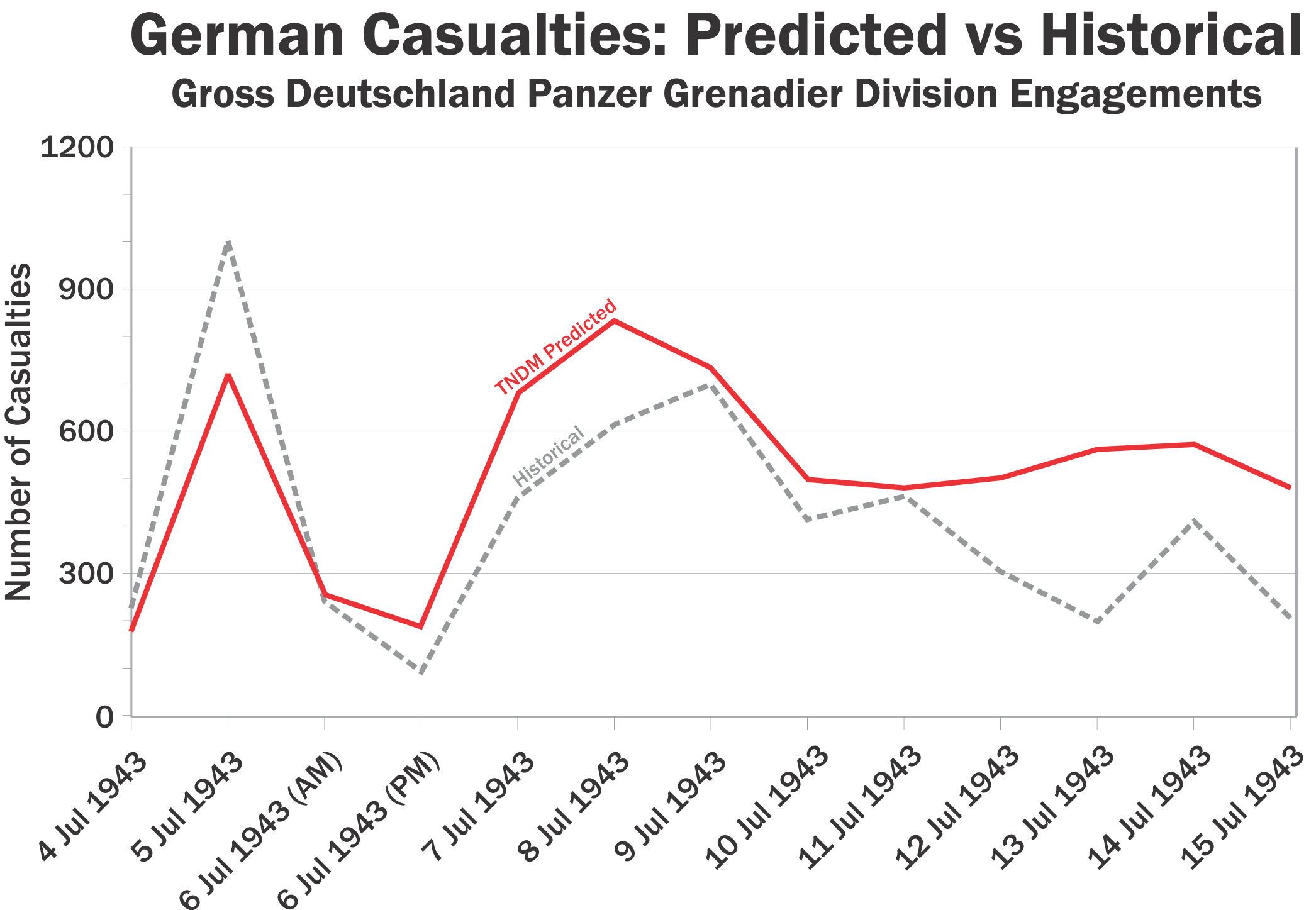Continuing to comment on the article in the December 2018 issue of the Phalanx by Alt, Morey and Larimer (this is part 3 of 7; see Part 1, Part 2)
On the first page (page 28) in the third column they make the statement that:
Models of complex systems, especially those that incorporate human behavior, such as that demonstrated in combat, do not often lend themselves to empirical validation of output measures, such as attrition.
Really? Why can’t you? If fact, isn’t that exactly the model you should be validating?
More to the point, people have validated attrition models. Let me list a few cases (this list is not exhaustive):
1. Done by Center for Army Analysis (CAA) for the CEM (Concepts Evaluation Model) using Ardennes Campaign Simulation Study (ARCAS) data. Take a look at this study done for Stochastic CEM (STOCEM): https://apps.dtic.mil/dtic/tr/fulltext/u2/a489349.pdf
2. Done in 2005 by The Dupuy Institute for six different casualty estimation methodologies as part of Casualty Estimation Methodologies Studies. This was work done for the Army Medical Department and funded by DUSA (OR). It is listed here as report CE-1: http://www.dupuyinstitute.org/tdipub3.htm
3. Done in 2006 by The Dupuy Institute for the TNDM (Tactical Numerical Deterministic Model) using Corps and Division-level data. This effort was funded by Boeing, not the U.S. government. This is discussed in depth in Chapter 19 of my book War by Numbers (pages 299-324) where we show 20 charts from such an effort. Let me show you one from page 315:

So, this is something that multiple people have done on multiple occasions. It is not so difficult that The Dupuy Institute was not able to do it. TRADOC is an organization with around 38,000 military and civilian employees, plus who knows how many contractors. I think this is something they could also do if they had the desire.

Businesses and other organisations have been modelling human behaviour with considerable success for ages. I do not see why the military are so reluctant to do it. It is like a phobia.
It is good that someone is not afraid to address this fundamental aspect of human behaviour.
I should have added “…human behaviour on the battlefield.”
This is a startling quote:
“Models of complex systems, especially those that incorporate human behavior, such as that demonstrated in combat, do not often lend themselves to empirical validation of output measures, such as attrition.”
If this really were true, it would not be recommended to try to model at all.
I have reached the point where I am almost ready to write off the average American’s ability to reason critically. If MORS can publish such clap-trap, what do you think the decision-making processes are like in the average government agency? Keep fighting the good fight Chris, but it remains an uphill battle.
Hey Rich! I am reminded of this quote: “It is difficult to get a man to understand something, when his salary depends on his not understanding it.” ― Upton Sinclair